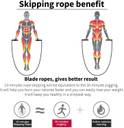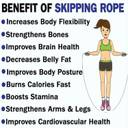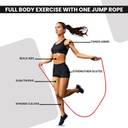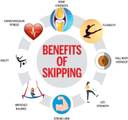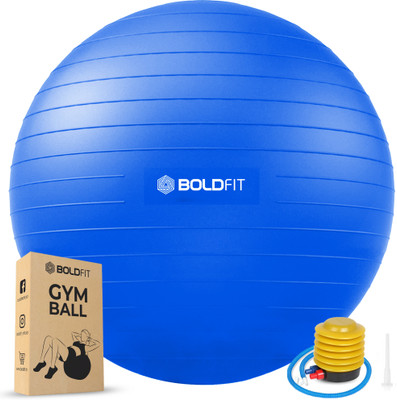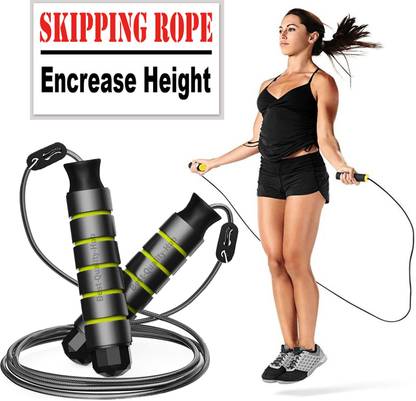
FFive Skipping Rope for Men and Women Jumping Rope With Adjustable Height Speed. Kids Skipping Rope (Multicolor, Length: 350 cm)
Share
FFive Skipping Rope for Men and Women Jumping Rope With Adjustable Height Speed. Kids Skipping Rope (Multicolor, Length: 350 cm)
4.4
33 Ratings & 3 Reviews₹120
₹299
59% off
Available offers
T&C
Warranty
0
Delivery
Check
Enter pincode
Delivery by8 May, Thursday|Free
?
if ordered before 9:59 PM
View Details
Highlights
- Pack of 1
- Color: Multicolor
- Type: Kids Skipping Rope
- Length: 350 cm
- Exercise Type: Skipping rope is a cardiovascular exercise that also improves agility, coordination, and endurance.
Services
- 0
- Cash on Delivery available?
Seller
Description
The Science Behind Skipping Rope: Muscular and Skeletal Benefits
Skipping rope is an excellent workout for strengthening muscles and bones, providing substantial benefits to the muscular and skeletal systems. The repetitive jumping motion works various muscle groups simultaneously, including the calves, quads, glutes, and hamstrings. This full-body workout helps tone muscles while improving overall muscle endurance. For example, the small stabilizing muscles in the feet and ankles, which are often neglected in other workouts, are highly engaged during skipping.
In terms of skeletal health, skipping rope is considered a weight-bearing exercise, meaning it puts stress on your bones in a way that encourages them to grow stronger. This is particularly important for preventing osteoporosis, a condition that weakens bones and makes them more prone to fractures. Skipping rope helps to increase bone density, especially in the lower body, and regular participation can p revent age-related bone loss. Moreover, skipping rope is a lower-impact exercise compared to running. The soft landings and minimal contact with the ground reduce the strain on joints, making it a safe option for maintaining joint health over time. With proper technique and good footwear, skipping can be a joint-friendly way to keep your body strong and resilient.
Read More
Specifications
General
| Playing Level |
|
| Ideal Usage |
|
| Ideal For |
|
| Care and Cleaning |
|
| Rope Features |
|
| Rope Material |
|
| Sales Package |
|
| Net Quantity |
|
Product Details
| Handle Features |
|
| Power Requirement |
|
| Power Consumption |
|
| Battery Type |
|
| Rechargeable |
|
| Other Power Features |
|
| Other Features |
|
Ratings & Reviews
4.4
★
33 Ratings &
3 Reviews
- 5★
- 4★
- 3★
- 2★
- 1★
- 20
- 7
- 5
- 0
- 1
4
Good choice
Nice product👍
READ MOREFlipkart Customer
Certified Buyer, Narayankhed
8 days ago
0
0
Report Abuse
5
Mind-blowing purchase
Good quality product.
READ MOREGanesh Baban
Certified Buyer, Pune
26 days ago
0
0
Report Abuse
5
Wonderful
Very good material and very comfortable.
Grip is also very good and likely adjustable.👍🏻
READ MOREGrip is also very good and likely adjustable.👍🏻
Harshil Padhiyar
Certified Buyer, Anand
1 month ago
0
0
Report Abuse
Have doubts regarding this product?
Safe and Secure Payments.Easy returns.100% Authentic products.
Back to top


